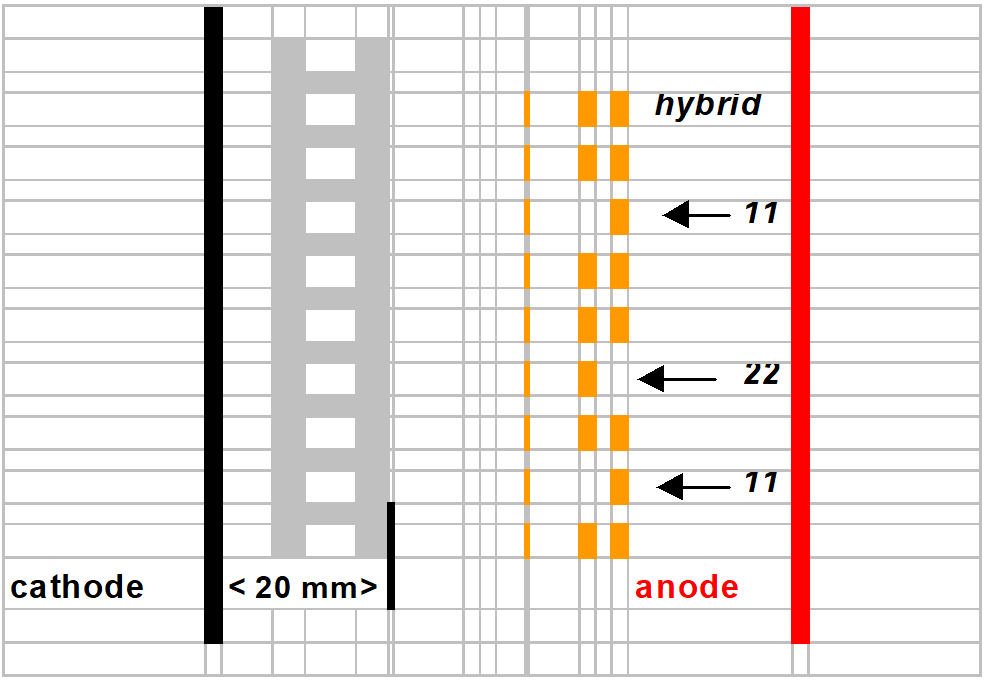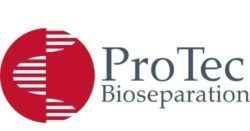
Brassica
LAP – (Leucine aminopeptidase)
16 % v/v glycerol
Bring 200 grams (= 160 ml) of glycerol (q.c.w. Sigma G-7757) and 800 ml distilled water in a beaker.
Mix well and bring to a final volume of 1000 ml with distilled water.
Store in the refrigerator.
Sepalyte pH 5-6 (ProTec Bioseparation Cat. No. 42014)
Ready to hand Sepalyte solutions. Store in refrigerator
Sepalyte pH 3-6 (ProTec Bioseparation Cat. No. 42006)
Ready to hand Sepalyte solutions. Store in refrigerator
Acrylamide/ bis acrylamide 29 : 1 solution
Ready to hand acrylamide solution (q.c.w. Sigma A-3574). Store in refrigerator.
0.1N Sodium hydroxide
4.0 g sodium hydroxide (q.c.w. Sigma S-8045) in 1000 ml distilled water.
Add a trace (tip of a small spatula) of sodium azide (q.c.w. Sigma S-8032).
Store at room temperature
0,1% w/v riboflavin
0.05 g riboflavin (q.c.w. Sigma R-0508) in 50 ml 0.1 N sodium hydroxide.
Store in the refrigerator for up to 2 weeks.
10% w/v ammonium persulfate
0.5 g ammonium persulfate (q.c.w. Sigma A- 3678) in 5.0 ml distilled water.
Store in refrigerator for one week
0.5 % v/v 3-6 Sepalyte solution
2.5 ml Sepalyte 3- 6 in 500 ml distilled water. Add a trace (tip of a small spatula) of
Orange G (q.c.w. Sigma O-1625). Store in refrigerator
0.1M phosphate buffer pH 6.3
Mix 12.0 g. sodium phosphate monobasic (q.c.w. Sigma S-0751) with 900 ml distilled water and stir until dissolved.
Adjust the pH to 6.3 with a 4 N NaOH solution (± 5 ml). Bring to a final volume of 1000 ml with distilled water.
Add a trace (tip of a small spatula) of sodium azide (q.c.w. Sigma S-8032).
Store at room temperature.
4 ml L-leucine ß-naphthylamide solution
Bring together 2-ml acetone (q.c.w. BDH 27023), 2 ml distilled water and 150 mg L-leucine b-naphthylamide (q.c.w. Sigma L-0376).
The solution should be made just before the staining step, not sooner.
2 % v/v acetic acid solution
Bring 20 ml of acetic acid 100% (q.c.w. BDH 27013) in 1000 ml distilled water. Store at room temperature.
TEMED
Ready to use TEMED Sigma ( T-9281).
Gel preparation
9.5 ml 16 % glycerol
2.0 ml Acrylamide/bis 29:1solution
0.3 ml Sepalyte pH 3-6
0.7 ml Sepalyte pH 5-6
0.065 ml 0.1 % w/v riboflavin
0.012 ml TEMED
0.035 ml 10% ammonium persulfate
Add the above reagents and swirl to mix. Pour the gel according to the flap technique and allow polymerizing for at least 4 hours under light. Store the gels in a sealed bag in the refrigerator for up to 2 weeks.
Sample preparation
Single seeds are placed into a 96 well micro plate. To each well an aliquot* of 0.5 % Sepalytees (pH 3-6 (Cat. No.42006)) is added. The aliquot to be added depends on the fraction size of the seed.
fraction size 1.25 – 1.49 mm +75 ml 0.5 % Sepalyte pH 3-6 (Cat. No.42006) solution.
fraction size 1.50 – 1.74 mm + 85 ml 0.5 % Sepalyte pH 3-6 (Cat. No.42006) solution.
fraction size 1.75 – 1.99 mm + 100 ml 0.5 % Sepalyte pH 3-6 (Cat. No.42006) solution.
fraction size 2.00 – 2.24 mm +125 ml 0.5 % Sepalyte pH 3-6 (Cat. No.42006) solution.
fraction size 2.25 – 2.50 mm + 150 ml 0.5 % Sepalyte pH 3-6 (Cat. No.42006) solution.
Electrophoresis
Turn the cooling supply on and set at a temperature of ± 15°C. Remove the gel from the glass plates. Clean the back of the gel with methanol/ethanol. Place the gel onto the cooling plate with several ml of water. The gel can be divided into three parts. Space the electrodes evenly across the gel, alternating cathode (black electrode) and anode (red electrode) and then place directly onto the gel.
Power settings are for one gel (double the mA and Watts when running two gels).
Prefocusing
Run 1: 600 V–60 mA–10 W–100 V/h
Sample application
After the prefocusing step, the 96 templates are positioned ± 15 mm from the anode (red electrode). See cartoon image section “gel interpretation 9.1.6. “ Each sample well is filled with 8 µl of supernatant.
Focusing
Run 2: 200 V–60 mA–10 W–100 V/h
Run 3: 1000 V–60 mA–12 W–1000 V/h
LAP staining
200 ml phosphate buffer pH 6.3
0.50 g Fast Black K salt (q.c.w. Sigma F-7253)
4 ml L-leucine b-naphthylamide solution
Heat up the phosphate buffer solution to ± 37° C. Add the reagents together and mix until fully dissolved and stain the gel at ± 37°C or at room temperature until the bands can be clearly visualized. Remove the stain and destain the gel in a 2 % glacial acetic acid solution for about 10 minutes and rinse with distilled water for an additional 10 minutes. The gel can be air-dried.
Gel interpretation
No international enzyme classification is used.
The nearest band of interest from the anode is genotyped “11”.
The farthest band of interest from the anode is genotyped “ 22”.
The hybrid is genotyped “1/2” in case that the female is 11 and the male 22.
The hybrid is genotyped “2/1” in case that the female is 22 and the male 11

ProTec Bioseparation (Protein Electrophoresis)
